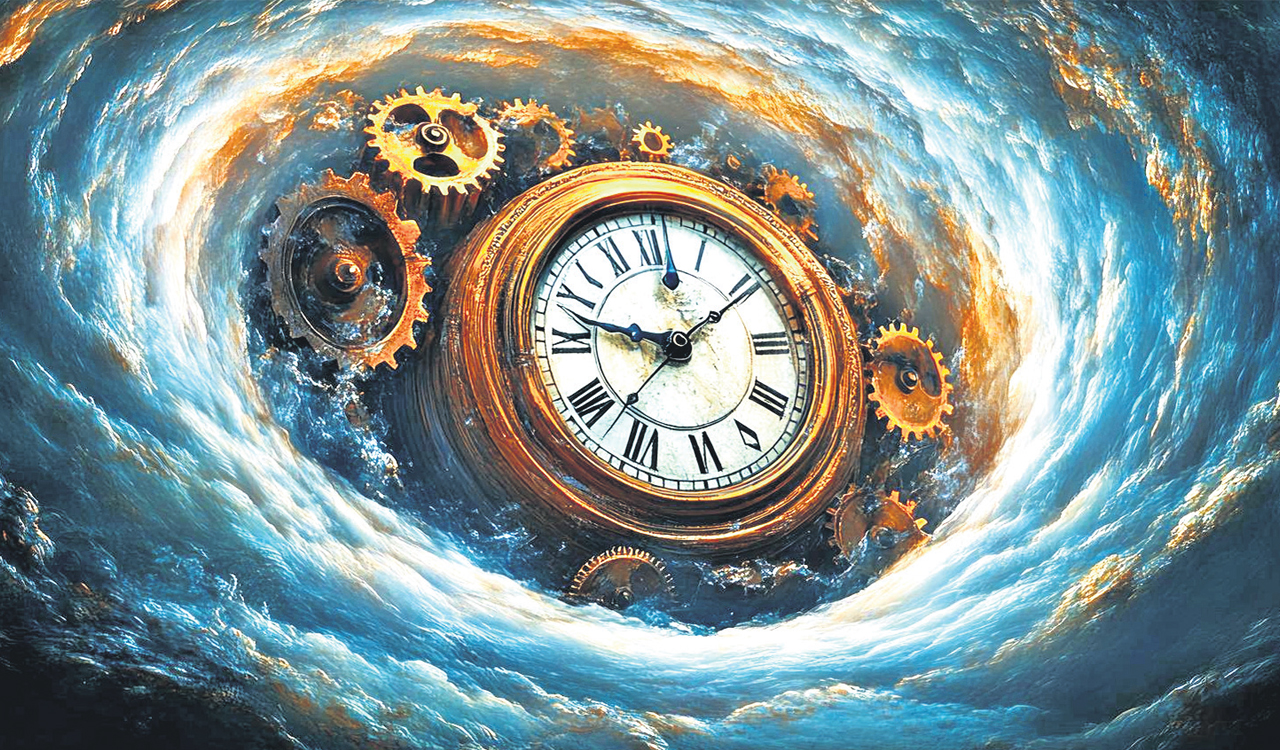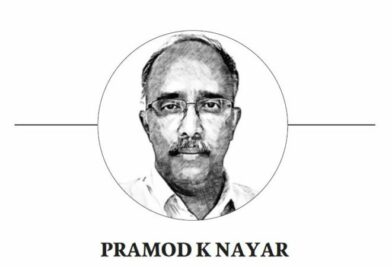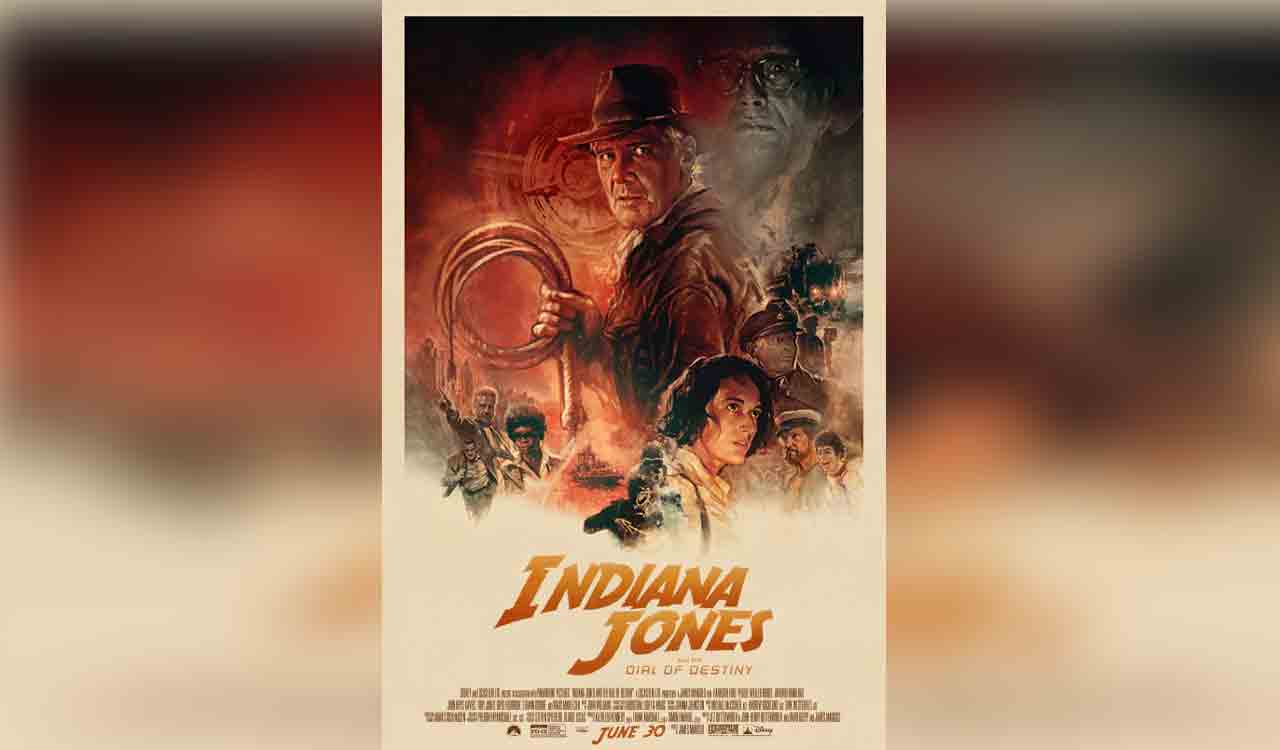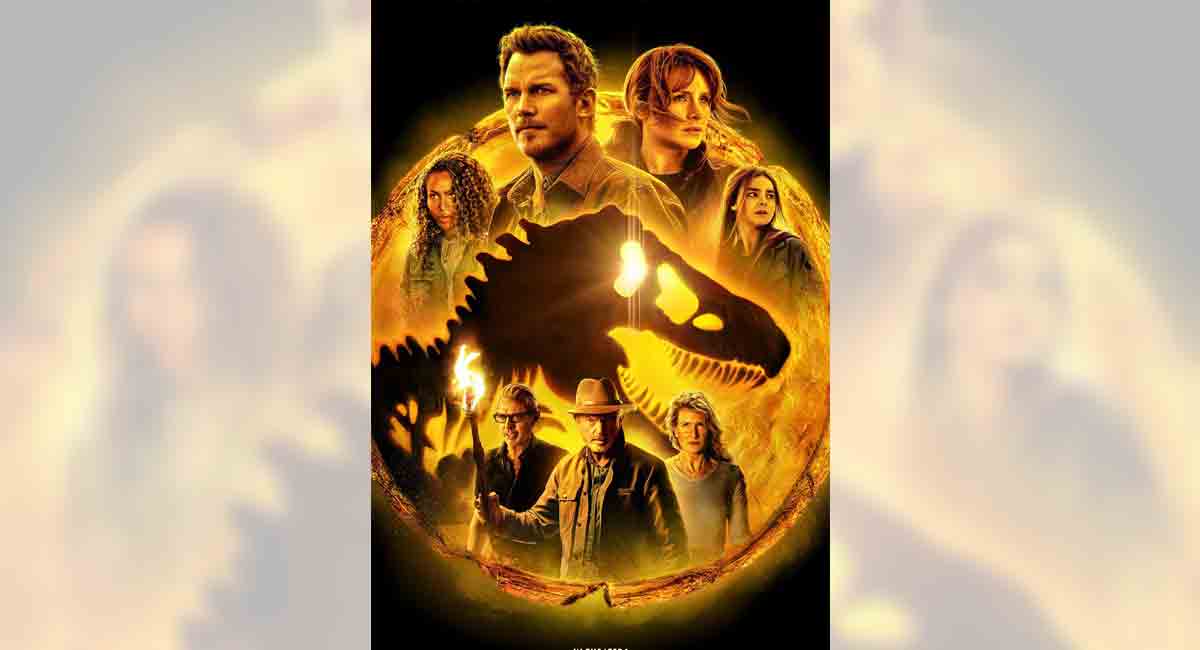Rewind: At the beginning …was Deep Time
Contemporary fiction is fascinated by Deep Time, a time before humanity and therefore before history, as it seeks to imagine planetary memory

By Pramod K Nayar
Long before Steven Spielberg gave T-rex something to chew on, literally, in Jurassic Park (based on Michael Crichton’s 1990 novel), popular writers have speculated on the world of giant lizards and other strange — from our point of view — creatures. Besides giant lizards, humankind has also been curious about our ancestors, the early humans, the hominids and the Neanderthals.
This fiction is exemplified by an interest in what is now called Deep Time. Deep Time fiction is an attempt to trace not just human history, but a time before history, that is, before humanity itself, and then to imagine how humans evolved. As an origin story, this is not just unparalleled: it also throws up interesting perspectives on how we see our ancestry.
Writing Deep Time
‘Deep Time’ is geologic time, planetary time and in some cases even cosmic time. David Wood in Deep Time, Dark Times: On Being Geologically Human(2019) describes it thus:
the creation of the universe (13.8 billion years), the solar system (5B), the earth, from leftovers after the creation of the sun (4.54B), and then the formation of the moon. Life began from .5B to 1.5B later. Early hominids appeared about 2 million, or 2M, years ago, while Homo sapiens emerged some 250,000 years ago. The Holocene saw the development of modern civilization starting some 11,700 years ago…
The term may have been first coined by American writer John McPhee in his 1981 book Basin and Range in which he wrote:
Numbers do not seem to work well with regard to deep time. Any number above a couple of thousand years — fifty thousand, fifty million — will with nearly equal effect awe the imagination.
Exploring such time frames has become popular in the 21st century with works like Robert Macfarlane’s Underland(2019), Richard Irvine’s An Anthropology of Deep Time(2020) and Noah Heringman’sDeep Time(2023).
Deep Time fiction and other writing is interested in time before humanity, and makes use of geological time scales to speak of the age of the planet, the eras and the evolutionary events played out on the land and in water. Such fiction creates a sense of ‘cognitive estrangement’, as critic DarkoSuvin argued about sci-fi: we are called upon to imagine time scales in millennia: not years, centuries or even thousands of years, but millions of years.
So what would worlds in Deep Time, be like?
- Whether speaking of diamonds or fossil fuels, extinct creatures or continents, Deep Time fiction shows an earth’s past that is not exclusive to humans
Prehuman Planet
Stephen Baxter’s Evolution (2003) begins 65 million years ago, in the age of the dinosaurs. Set in what would become Montana, the earth is described as a place where ‘the continents were fused into the single vast Pangaean landmass, and the dinosaurs had been able to spread across the planet’.
Over time, ‘continents danced and species rose and fell’. We are given a little bit of history, ‘for eighty million years the sea levels had been rising. The post-Pangaea spreading of the continents, and the formation of huge reefs and shelves of chalk around their coasts, had pushed huge volumes of solid matter into the oceans’. Baxter describes the variety of life in the ocean, especially the dinosaurs, and their eventual extinction. In the midst of the giant lizards is a proto-mammal, Purga, an adaptation of the species name, Purgatorius.Evolution gives us the origin story of the warm-blooded lifeforms. The excerpt is worth citing in full:
Some two hundred million years before Purga’s birth, certain animals had begun to develop a new kind of metabolism. They had been predators, driven by selection to burn food more briskly in order to improve their luck in the chase. It had meant a complete redesign. These ambitious predators needed more food, a higher rate of digestion, a more efficient system of waste elimination. All this had raised their metabolic rate, even when resting, and they had had to increase the size of heat-producing organs like the heart, kidneys, liver, and brain. Even the working of their cells had speeded up. In the end a new and stable high body temperature had been set.
The new hot-blooded bodies had had an unplanned advantage. Cold-bloods relied on drawing heat from the environment. But the hot-bloods did not. They could operate at peak efficiency in the cool of night, when the cold-bloods had to rest, or in extreme heat, when cold-bloods would have to hide. They could even prey on cold-bloods—frogs, small reptiles, insects—at times like dawn and dusk, when those slow movers were vulnerable.
Evolutionary advantages, survivalism and adaptations mark the ‘hot-bloods’ who are therefore forerunners to the rest of the species that then began to dominate the planet: they could now, finally, ‘prey on cold-bloods’.
Later he writes about how the Atlantic was formed, how
Africa drifted north of the equator, in the process pushing Eurasia further north … Antarctica sailed north to collide with Australia, and that new assemblage began to push into east Eurasia. So a new supercontinent had been born … In the interior, far from the mediating effect of oceans, severe conditions took hold—ferociously hot and arid summers, killingly cold winters
This is the making of modern earth as we understand it: and the process took millions of years.
The question of scale is crucial, and these are ‘macro-scale fantasies’ as critics Siobhan Maria Carroll and Edward Larkin term works dealing with massive timescales but also vast geographic terrain: supercontinents, continental drifts and others. Such fiction alerts us to the infinitesimal role of humanity on earth: we have been around for very little time.
This fiction also makes another point: life thrives because of the events of millennia before life. As critic Christine Daigle puts it:
the past lives of the beings … fossilized and became our fuel, we nourish ourselves from the bodies of other living creatures – nonhuman animals or plants – and thereby ensure our subsistence.
Daigle is referring tofossil fuels which have sustained humanity, these fuels being the remainders of life from millennia ago, decayed and sedimented into the earth.
To write Deep Time is to humble humanity: we exist because others did before us.
Lost Worlds
When talking Deep Time and its exotic life forms, since these animals are extinct, the only way to bring them back into our imaginations other than through the messy and rather dull encounter with bones and fossils, was to create a land in which these creatures still existed: a ‘lost world’.
Arthur Conan Doyle fictionalised the dino-era in The Lost World (1912) and Edgar Rice Burroughs, known principally for his Tarzan of the Apes series, did so in The Land that Time Forgot(1918).Conan Doyle’s novel is set in the Amazon region. Here Captain Challenger and his team encounter pterodactyls, iguanas, megalosaurs and other thought-to-be-extinct species, in addition to indigenous ‘ape-men’. Doyle’s novel carves a pocket of untouched nature which runs to a different time-scale.
Burroughs in his The Land that Time Forgot locates his fantasy in and around the fictitious island of Caprona (Burroughs says the native name for the island is Caspak) somewhere in the Antarctic. Despite its location, Caspak has its own unique climate and its interiors are clearly subtropical,in which dinosaurs thrive.Burroughs suggests that the land is itself a contradiction where one can see ‘the tropic foliage of Caspak on the one hand and huge icebergs from the near Antarctic upon the other’.
InDoyle, the explorers find diamonds, which are formed deep under the earth, in specific conditions. The planetary conditions that are beyond the human, serve the human interest in precious materials that occur inthe earth and over time.This encounter with the planet’s geological processes and time is aligned with the protagonists’ encounter with extinct animal species and indigenous human races that resemble an early stage of evolution. Doyle’s Challenger delivers an exposition on these races:
“The type of these people,” said he in his sonorous fashion, “whether judged by cranial capacity, facial angle, or any other test, cannot be regarded as a low one; on the contrary, we must place it as considerably higher in the scale than many South American tribes so great a gap separates these ape-men from the primitive animals which have survived upon this plateau, that it is inadmissible to think that they could have developed where we find them.”
Challenger brings together prehuman, early human and present-human time scales within the space of the same island, while accounting for species loss, species variation and species migration, allof which are integral to the earth’s past, and not exclusive to the humans.
Burroughs too speaks of these evolutionary pockets. In Caprona, they encounter terrible beasts and reptiles and ‘a few manlike creatures’.
Of Hominids and ‘Man’
Part of the appeal of the hominid novel is the speculation on how their limited different and cognitive and perceptual apparatus helped them survive their harsh contexts.
In Burroughs, the explorers meet a ‘new type of man—a higher type than the primitive tribe’, implying multiple lines of human evolution in the same space. Burroughs writes:
They carried weapons, stone-shod spears, stone knives, and hatchets—and they wore ornaments and breech-cloths.
Then there are the indigenes ‘armed only with nature’s weapons—powerful muscles and giant fangs’. The lost world novel is an attempt to map biodiversity and human diversity, before Homo sapiens and often before humanity itself, as we can see. Human evolution has takenmultiple paths, and often different types co-existed.
In PetruPopescu’sBefore Adam (1996), also a ‘lost world’ novel, he describes the limitations of the protohuman brain. A hominid boy approaches a modern day vehicle:
But this thing wasn’t like the other large creatures he knew in the savanna. It smelled smoky and hot, but in a repellent way that was different from the smoldering fields after a bush fire. Also, this big animal didn’t have any ticks or bugs or other little parasite creatures clinging to it.
And elsewhere Popescu describes a hominid woman:
Her instincts of territory, aggression, fight for survival and for power, continuation of her genes, telling her own genes from other genes in her clan and her own genetic species from other species, were not terribly different from the same instincts in simpler mammals, or even in reptiles or birds. Yet they were essential to her humanness
The novels represent these hominids as almost entirely dependent on their environment,driven by basic instincts rather than given to complicated thinking or even planning say, food supplies or shelter, for the future (a key feature of the later humans).
- Deep Time fiction engages in massive scales of time and place, a time before humans and even before the continents and water bodies as we know them now
But some novels also do more.In The Inheritors (1955), Golding’s famous account of ‘sharing pictures’ as a means of communication in the hominids, we are told:
The three of them stood and looked at each other. Then, as so often happened with the people, there were feelings between them. Fa and Nil shared a picture of Ha thinking.
Emotions generate communication. While hunger and instinct dominate the life of Fa, Lok and others, Golding emphasises that there is something more that binds (even) the early humans together. Golding mentions laughter, terror and fear on several occasions in the novel.
he laughed for joy and turned to Fa, feeling that he would like to lie with her for all his hunger.
He felt the sweat of terror in their palms.
Triumphantly he sunned himself before them.
The people applauded him, grinning, half at Lok, half at the story. Secure in their applause, Lok settled himself by the fire.
He had another picture of the logs moving back into the river and this picture was so clearly connected in some way with the first one and the sounds from the clearing that he understood why one came out of the other. This was an upheaval in the brain and he felt proud and sad and like Mal.
Hominid fiction forces us to ask if such a telepathic sharing marks the ‘Neanderthals’ humanity … ie whether they are “less” or indeed “more-than-human”’, as critic of posthumanism Stefan Herbrechter argues.
- Human prehistory was the story of coexistence, just as it is a story of living within specific climatic conditions such as the Ice Age
The Inheritors stages the encounter between the Neanderthals and their successors, Cro-Magnon man. This encounter is violent, and implies that the Neanderthals were wiped out in the first acts of human genocides on earth. But it also suggests that some of the Neanderthals may have hybridised themselves — thenovel concludes with aNeanderthal child kidnapped and set to be nurtured within the Cro-Magnon clan.
Hominid fiction, like prehuman fiction, shows how humanity evolved from and through diversity, through violence and adaptation. Human prehistory was the story of coexistence, just as it is a story of living within specific climatic conditions such as the Ice Age, and the stories enable Baxter, Burroughs and others to show early human attitudes towards the sabre-tooth or the mammoth.
These novels showhow the spear and the stone emerged out of the fraught interactions with dangerous fauna: in short, how human technology co-evolved with its environment. It suggests that the human is multi-origin and multispecies in dependency, development and evolutionary processes.
At the heart of the human is difference.

(The author is Senior Professor of English and UNESCO Chair in Vulnerability Studies at the University of Hyderabad. He is also a Fellow of the Royal Historical Society and The English Association, UK)
Related News
-
Cartoon Today on December 25, 2024
7 hours ago -
Sandhya Theatre stampede case: Allu Arjun questioned for 3 hours by Chikkadpallly police
8 hours ago -
Telangana: TRSMA pitches for 15% school fee hike and Right to Fee Collection Act
8 hours ago -
Former Home Secretary Ajay Kumar Bhalla appointed Manipur Governor, Kerala Governor shifted to Bihar
8 hours ago -
Hyderabad: Organs of 74-year-old man donated as part of Jeevandan
8 hours ago -
Opinion: The China factor in India-Nepal relations
9 hours ago -
Editorial: Modi’s Kuwait outreach
9 hours ago -
Telangana HC suspends orders against KCR and Harish Rao
9 hours ago




